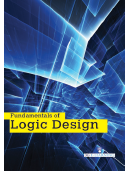Computer Science

Logic design is a system in electrical and computer engineering that uses simple number values to produce input and output operations. Digital logic design is the basis of electronic systems, such as computers and cell phones. Digital logic is rooted in binary code, which renders information through zeroes and ones, giving each number in the binary code an opposite value. This system facilitates the design of electronic circuits that convey information, including logic gates with functions that include AND, OR, and NOT commands. A Boolean algebra is a mathematical structure that is similar to a Boolean ring, but that is de ned using the meet and join operators instead of the usual addition and multiplication operators. Logic gate is an idealized or physical device implementing a Boolean function; that is, it performs a logical operation on one or more logical inputs, and produces a single logical output. A ip- op is a circuit that has two stable states and can be used to store state information. State machine is a device which can be in one of a set number of stable conditions depending on its previous condition and on the present values of its inputs.